
Complete Guide to Death Valley National Park
Discover the best time to visit, where to stay, and what to do in this land of extremes.
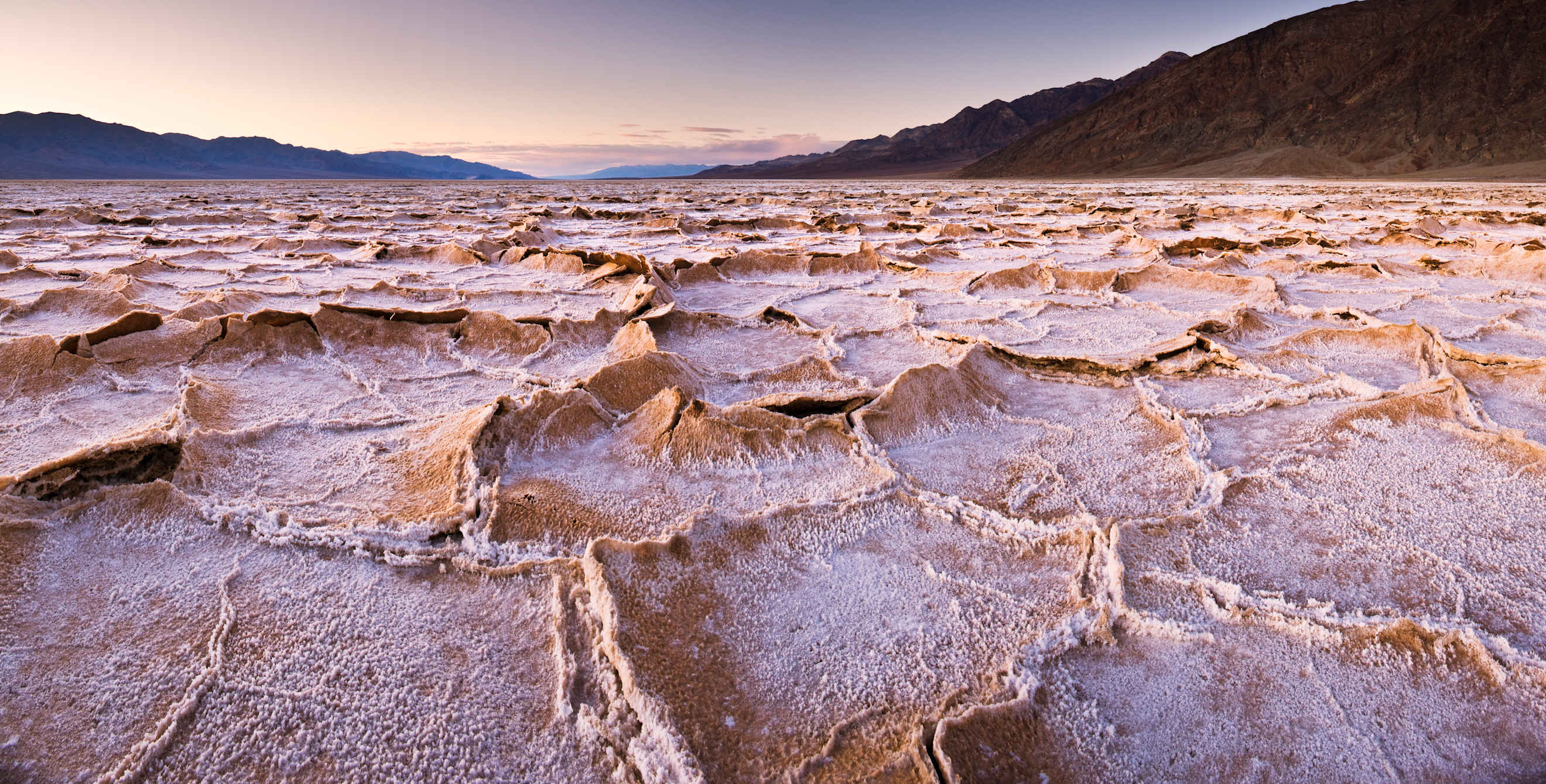
Stretched across the border between California and Nevada, Death Valley National Park is both the hottest and driest place in North America. This desolate wilderness east of the Sierra Nevada mountains is home to more than 1,000 flora and 400 fauna species, as well as the Timbisha Shoshone people who have lived in the region for centuries. The highest temperature ever recorded on earth, a searing 134.1 degrees Fahrenheit, was seen at Death Valley’s Furnace Creek in July 1913.
President Herbert Hoover created Death Valley National Monument in 1933 in order to protect the delicate landscape from further gold, silver, and zinc mining and other interests. In 1994, Congress declared it a national park.
Today, Death Valley consists of more than 3 million acres of designated wilderness and ranges in elevation from 11,049 feet above sea level to 282 feet below sea level, the lowest point on the continent.
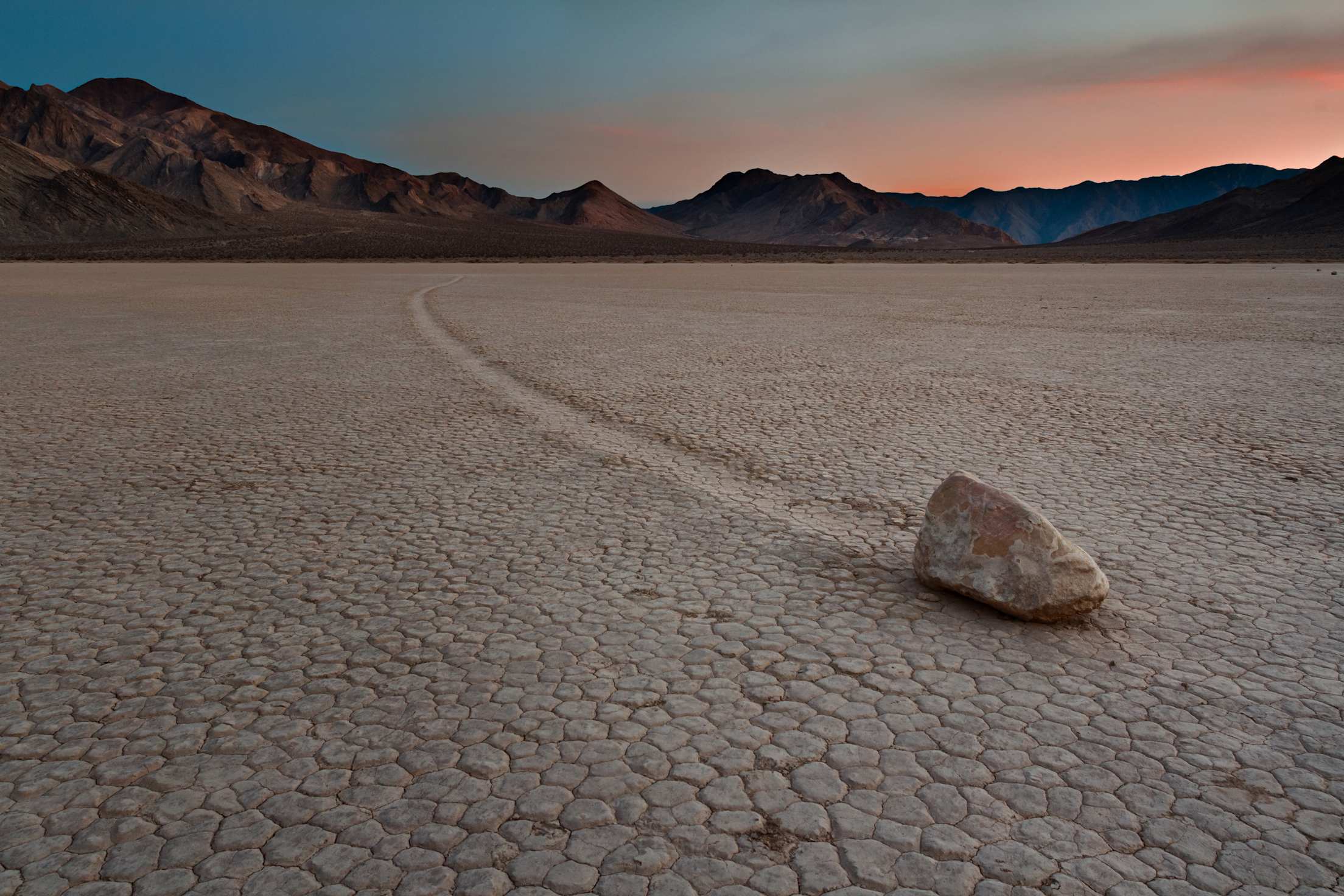
Top Sights and Attractions
Brimming with unique landscapes and surprising natural attractions, Death Valley offers plenty to do and see. Here are some of our favorite “don’t miss” spots.
Badwater Basin
Not only does it sit at the lowest point in North America, but Badwater Basin in the park’s southern section is also home to nearly 200 square miles of salt flats. Their crystals are constantly changing, creating a sea of mesmerizing hexagonal honeycomb shapes. Visitors are allowed to hike out onto the salt flats. If you do, be sure and snap a photo of the sign marking “sea level,” which sits high on the Black Mountain cliffs above the basin.
Mesquite Flat Sand Dunes
Death Valley is home to a handful of sand dune deserts, most of them occupying small patches within the much larger valley. The most popular and easiest sand dunes to access are the Mesquite Flat Sand Dunes, just off of Highway 190 near Stovepipe Wells Village in the park’s center. The dunes are protected wilderness and a great place for star gazing, sand boarding, and catching dramatic shadows during sunrise and sunset. The dunes only rise about 100 feet, though the two-mile round-trip hike to its highest dune (one that’s easily discernible from a distance) is a favorite park activity.
Artists Palette
The showpiece of Death Valley’s nine-mile Artists Drive scenic loop, Artists Palette is a multi-colored hillside featuring pastel shades of red, orange, yellow, blue, pink, and green. This amazing display of natural art comes from the oxidation of various minerals, such as iron, chlorite, and manganese. Several walking paths from the nearby parking area offer up-close views.
Zabriskie Point
A quick drive from Death Valley’s Furnace Creek Visitor Center, this dramatic lookout rises above the park’s clay and mudstone badlands, revealing views of the salt flats further afield. It’s a fairly steep (though short) paved incline to the top, but the vistas are worth it—especially at sunrise and sunset. Keep an eye out for Manly Beacon, a towering spire that rises 823 feet above the badlands.
Racetrack Playa
Racetrack Playa is home to one of Death Valley’s most unusual phenomenons: a dry lakebed dotted with odd “sailing stones” that move mysteriously along the playa floor with no gravitational cause. While the sizes of stones vary, they all leave visible tracks behind them as they go—some stretching as long as 1,500 feet. It’s a bizarre sight, but one you won’t want to miss. Take note that the road to Racetrack Playa is rough and typically requires a high clearance vehicle with good tires and four-wheel drive. The drive takes 3.5 hours each way to and from Furnace Creek, and there is no cell service on the way.
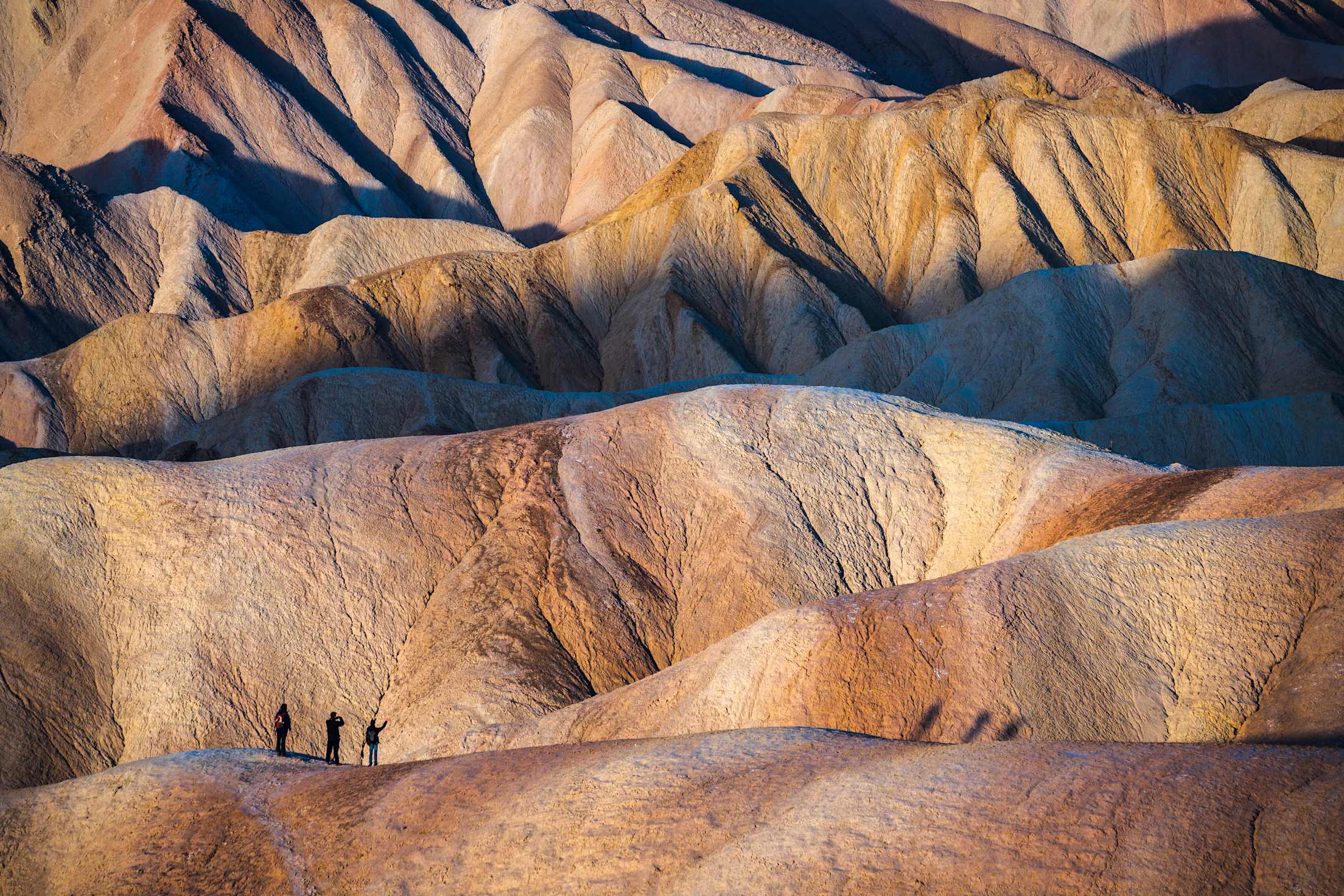
Top Things to Do in the Park
Hiking and Backpacking
Death Valley isn’t a place with very many established hiking trails. Most hikes occur up the sides of canyons, across dunes, and alongside ridges. Due to the park’s extreme summer temperatures, the best time to hike in Death Valley is from November through March. If you do find yourself here in summer and want some exercise, head to the park’s higher elevations, which are relatively cooler than the lower valley.
Favorites hikes in the park include the Mosaic Canyon Trail, an approximately 3.5-mile out-and-back route that features winding narrows and rock scrambles. The area is prone to flash floods, so skip this if there’s a chance of rain. There’s also the popular 6.4-mile Golden Canyon and Gower Gulch Loop via Zabriskie Point, which runs through colorful badlands and past old borax mines.
Backpacking in Death Valley can be strenuous, but for those who enjoy a moderate challenge there’s Panamint Dunes. It’s about a 3 to 4 mile trailless hike across the park’s Panamint Valley to the star-shaped dunes, where you can set up camp. Overnight stays require a permit, which are available at the Furnace Creek Visitor Center.
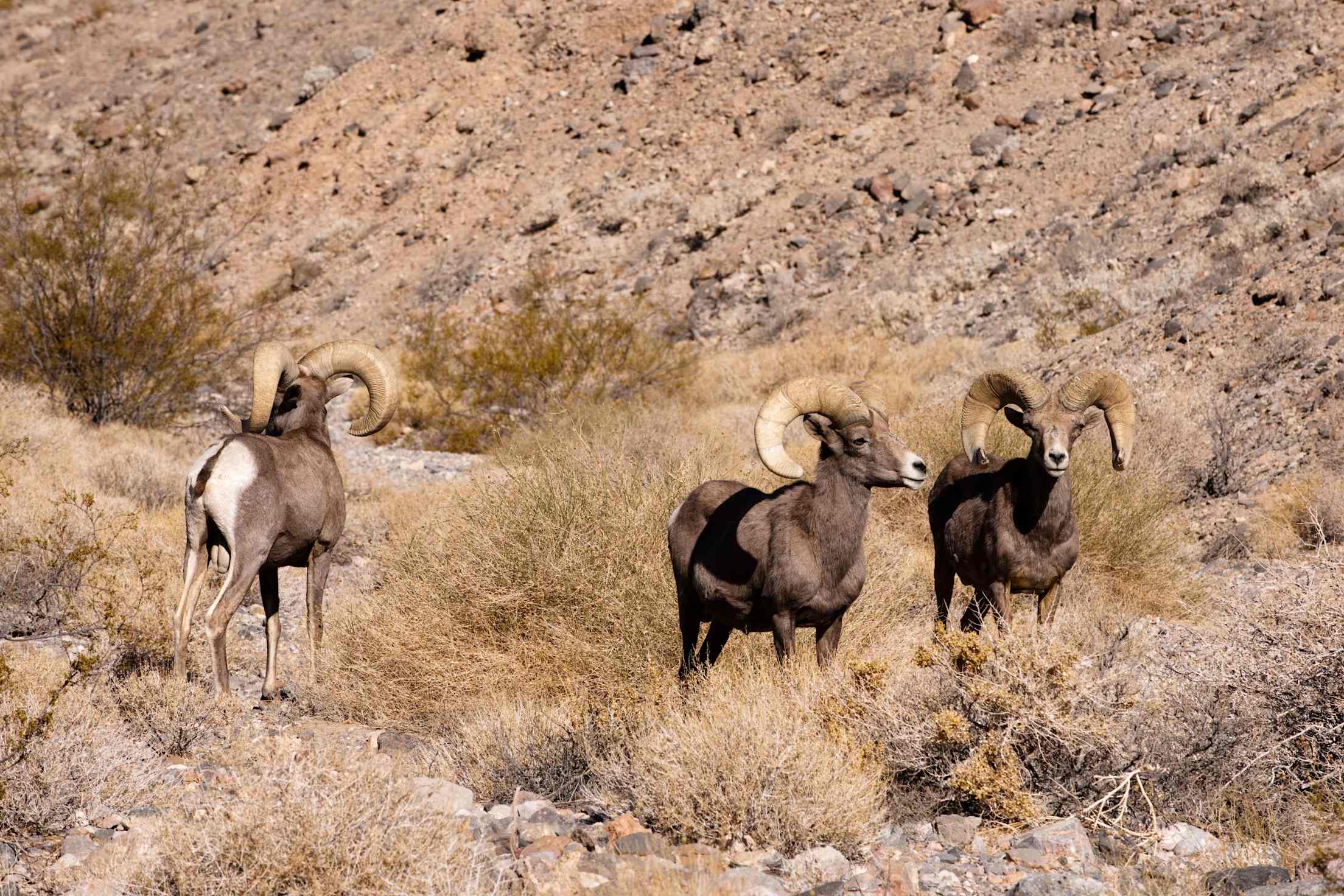
Wildlife Watching
Death Valley is known for its uniquely adapted wildlife, which include desert bighorn sheep—often visible grazing on the park’s mountain slopes—and nocturnal kangaroo rats (large-headed, big-eyed rodents with small ears and long tails). Roadrunners are common within the park, as are desert cottontails or large-eared gray rabbits that like to hide in and around thick, brushy shrubs. Hundreds of migratory birds make their way through the park in both spring (April–May) and fall (August–September), including warblers, hummingbirds, and meadowlarks. Keep an eye out for coyotes, badgers, and desert tarantulas, too—especially in the park’s creosote bush scrub and Joshua tree stands, like the one in the Lee Flat area.
Wildflower Viewing
The wildflower displays in Death Valley are often spectacular, especially when nature produces just the right conditions for a super bloom: a rare event in which huge numbers of wildflowers burst to life at once. Wildflowers in the park start opening in mid-February in the lower portions of the park and the blooms move upward in elevation as the year goes on. Species include mariposa lilies; desert golds; lilac sunbonnets; and desert paintbrushes in yellow, orange, lavender, and red.
Stargazing
Death Valley has some of the darkest skies in the country. The best celestial viewing occurs at Mesquite Flat Sand Dunes and Harmony Borax Works, a former 19th-century ore processing plant in the park’s Furnace Creek area.
Where to Camp and Stay in and Around Death Valley National Park
Death Valley’s main camping season runs from October through April. Furnace Creek Campground is the park’s only National Park Service campground that accepts reservations during this time, and it tends to fill quickly. It features both dry RV and tent sites as well as sites with full RV hookups.
First-come, first-served campgrounds include the popular Texas Springs, located in the hills above Furnace Creek, and Death Valley’s largest campground, Sunset. With 230 sites, it almost always has space available, even in peak season.
When camping in summer, head to the park’s higher elevation campgrounds (Mesquite Spring, Emigrant, or Wildrose), which all have sites available on a first-come, first-served basis.
Privately operated campgrounds within Death Valley that accept reservations year-round include Stovepipe Wells RV Park, the Ranch at Death Valley, and Panamint Springs Resort.
For indoor lodgings, try the small town of Beatty, offering easy access to Nevada’s Rhyolite ghost town and the Goldwell Open Air Museum. There’s also Pahrump, a spread-out city that sits at an elevation of 2,697 ft, making summers slightly cooler than within the park. The park is also home to the Oasis of Death Valley resort and the more low-key Stovepipe Wells Village Hotel.
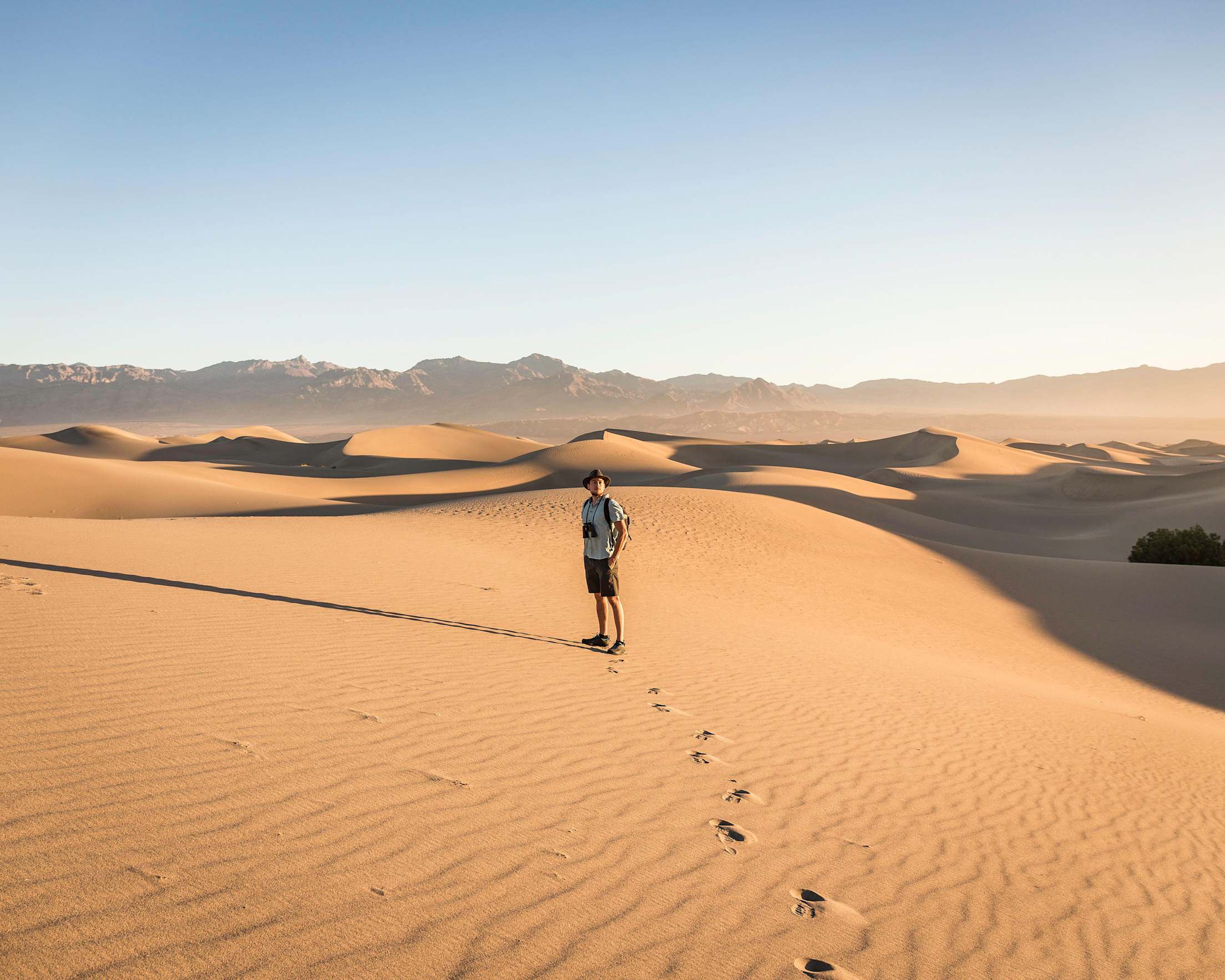
Know Before You Go
- Death Valley is open year-round, but flooding can cause road closures. Check ahead.
- Spring is the best time of the year to visit, thanks to its relatively moderate temperatures and blooming wildflowers. For the fewer crowds, plan a trip between Thanksgiving and Christmas.
- Although sunny skies are the norm throughout the park, strong wind is a common occurrence—especially in the spring.
- Reptiles, including snakes and scorpions, like to hide out in dark holes and crevices, so steer clear.
- Death Valley is extremely hot and dry. It is essential to drink ample water while visiting. Always carry fresh water with you.
- Sun protection, including a hat, sunglasses, and sunscreen, is a must.
- Cell service is limited throughout the park. Download any maps or addresses beforehand.
Leave No Trace
With Death Valley’s rich mining history, there’s a chance that you’ll come upon old mining tunnels and shafts. They might be unstable and/or have pockets of poisonous gas, so it’s best to enjoy them from a distance.
Always follow the seven Leave No Trace principles, which include respecting wildlife and minimizing campfire impact, when visiting Death Valley or any other national park.
Discover Members-only discounts on car rentals, hotels, and more.